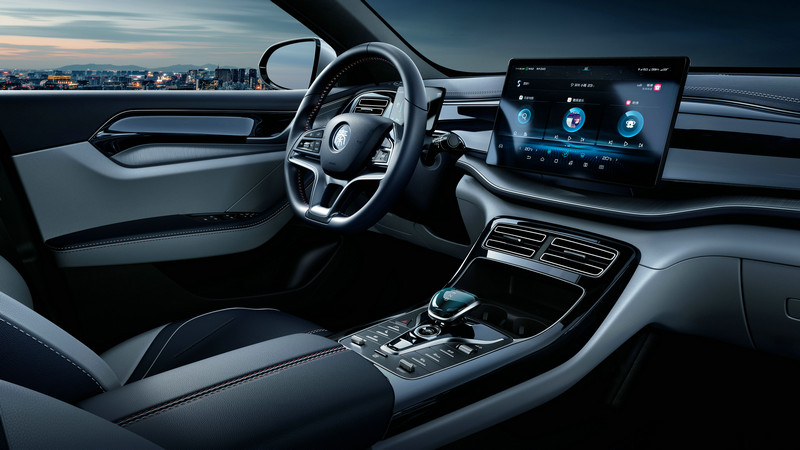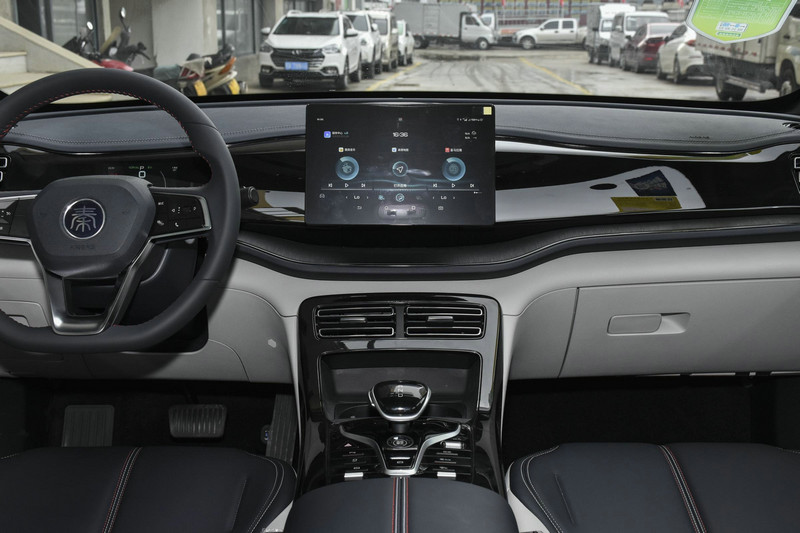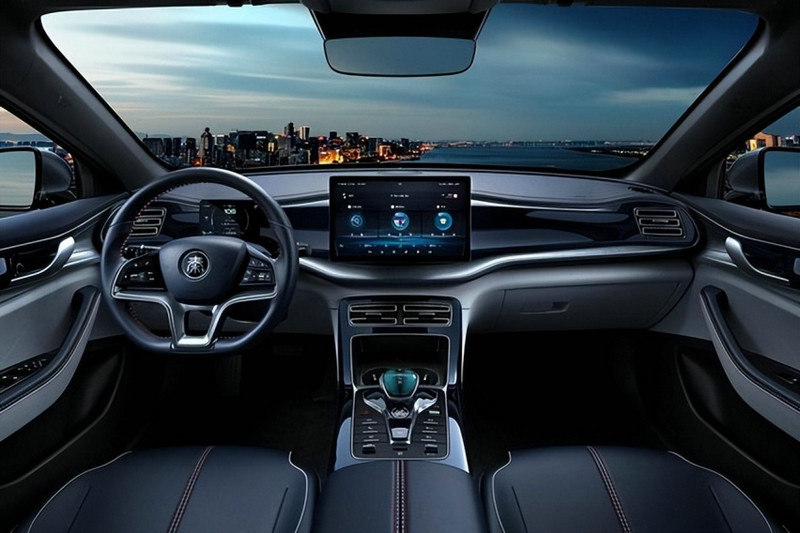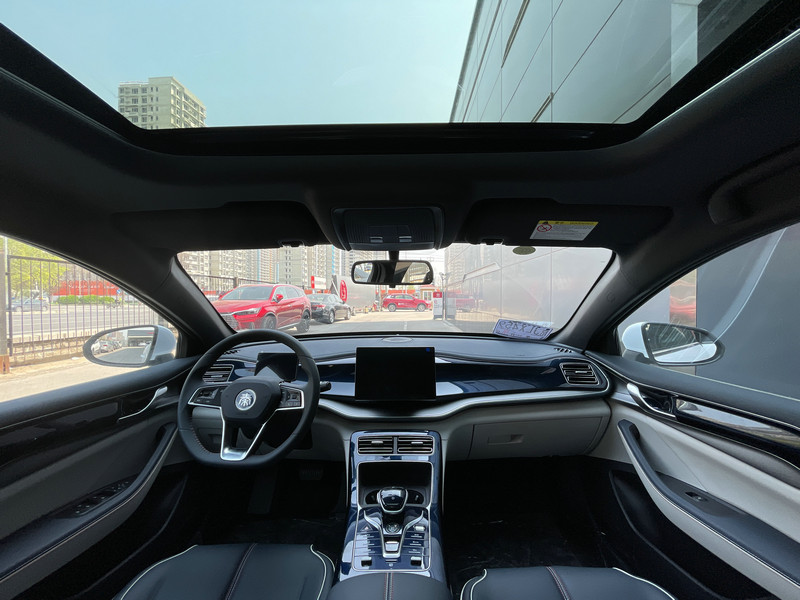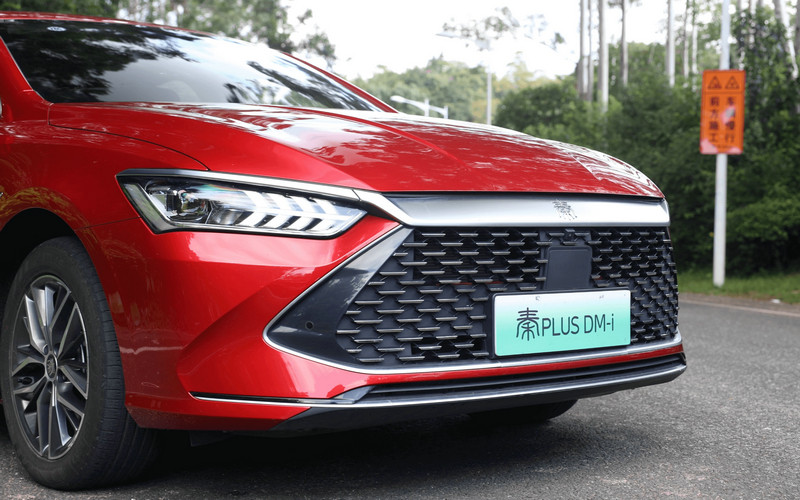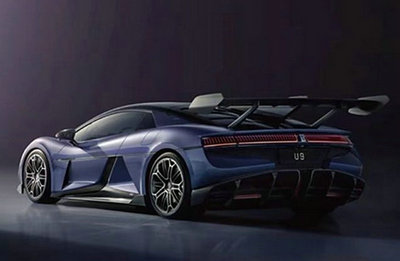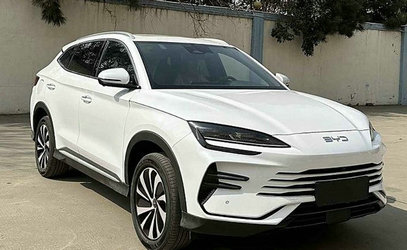BYD Qin PLUS DM-i Real Review
In the domestic new energy vehicle market, BYD has been one of the early players and has been able to keep up with the development of new energy. So, as a plug-in hybrid model, the BYD Qin PLUS DM-i not only helps reduce daily commuting fuel consumption but also provides a higher range tolerance for long-distance trips. So, how does this model perform?
Let's start by looking at the exterior. From the front, the overall design follows BYD's family design concept. The DM-i version features an exclusive grille with a silver chrome trim on top, enhancing its aesthetics. The unique shape of the front headlights gives it a sharp appearance. The side profile is sleek, with delicate lines on the skirts, elongating the visual presence of the vehicle. The rear design is stylish, with taillights that complement the front fascia, and the lower bumper has a solid and well-executed black finish.
Moving to the interior, the overall design is clean and embodies a futuristic concept for new energy vehicles. The steering wheel feels solid, with attractive stitching on top. The seats are well-padded, providing good rebound strength when pressed. However, the suspension is not as flexible, so the seats feel relatively firm when driving on bumpy roads, but the overall experience is still satisfactory. The central armrest has a large storage compartment, accommodating more items and facilitating daily travel.
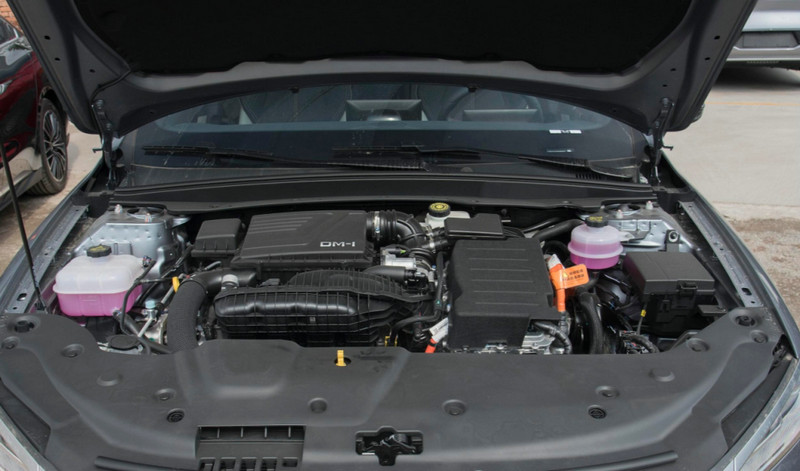 BYD Qin PLUS DM-i engine compartment
BYD Qin PLUS DM-i engine compartment
The vehicle adopts a powertrain consisting of a 1.5L engine and an electric motor. The total power output of the electric motor is 132 kW or 145 kW, with a total torque of 316 N·m or 325 N·m. The NEDC pure electric range is 55 km or 120 km.
As a plug-in hybrid model, what are the distinctive features of the BYD Qin PLUS DM-i?
I wonder if any of you have experienced this model. As long as you have the opportunity to experience and test drive it, you will feel that the steering of the BYD Qin PLUS DM-i is relatively comfortable compared to traditional cars. This is because it adopts an electronic power steering system, which is fully controlled by the electric motor for steering intervention. So, at low speeds, I can feel that the steering is light, making it easier to start from a parked position. At high speeds, the steering becomes heavier to prevent dangerous situations caused by excessive steering input. This is something I really like about it.
Moreover, in some videos, there is a possibility of the electronic power steering system requiring driver intervention to return to center after completing a sharp turn. However, based on my experience, the feedback from the electronic power steering is acceptable, and I did not encounter a situation where driver intervention was needed to return to center after a sharp turn. The response and recovery speed are also quite good.
Daily operation of in-car functions can be risky when manually operated, so intelligent voice control has become an essential feature in vehicles. The intelligent voice system equipped in this car, as part of BYD Dilink, performs reasonably well in terms of speech recognition accuracy and continuity. When I said, "Hello Xiao Di, please turn on the air conditioning, set the temperature to 26 degrees, and open the windows," the vehicle responded to the command in about 0.3 seconds. The commands for the air conditioning, temperature, and windows were executed simultaneously, indicating good logical sequencing and avoiding confusion caused by multiple commands.
In addition, intelligent driving assistance is also crucial. During long-distance highway driving, continuously pressing the accelerator and holding the steering wheel can be tiring for the legs and feet. Adaptive cruise control and lane-keeping assist systems come in handy in such situations. When we set the cruise speed using adaptive cruise control, the lane-keeping assist system automatically activates. If the vehicle deviates from the lane, the system automatically corrects the steering, keeping the vehicle stable in the center of the lane and freeing the driver's hands and feet.
However, if we don't hold the steering wheel for an extended period, the vehicle will issue a warning through the instrument cluster to prevent us from losing focus and taking unnecessary risks. Additionally, when changing lanes, it's important to activate the turn signal; otherwise, the vehicle will apply significant counterforce to our steering, potentially leading to a failed lane change.
In summary, considering the overall performance of this vehicle, it performs quite well in the sub-100,000 RMB price range and is suitable for daily family use.
The above is the full content of BYD Qin PLUS DM-i Real Review


